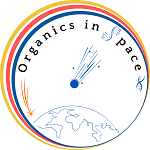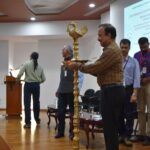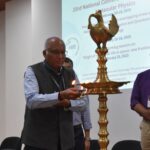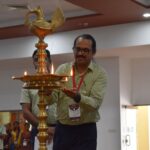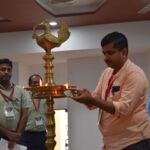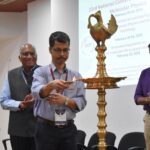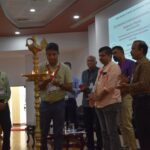A national capacity building initiative
Introduction
The past two decades have seen a significant increase in interest among researchers in the presence of organic molecules in various members of our solar system. Several highly successful missions, including Cassini-Huygens, Dawn, Rosetta, NewHorizons, and Stardust probe, among others, are primarily responsible for this. A number of laboratory experiments were inspired by the findings from these missions, and significant new findings are already emerging. New discoveries of organic molecule are being reported from all throughout the solar system, including Jupiter, the dwarf planets Pluto and Ceres, the moons Titan, Triton, Europa, and Enceladus, as well as comets, asteroids, and others. Recent accomplishments of the Hayabusa-2 and Osiris-REX missions have led to astonishing findings about our solar system. Therefore, this is a really exciting period in human history to plan and carry out a combined laboratory and space mission that is precisely focused on the formation and evolution of organic molecules in our solar system under varied conditions.
Planetary science research in India has advanced significantly in recent years thanks to the Indian Space Research Organisation (ISRO). With the help of missions like the Mars Orbiter Mission, Chandrayaan-1, and Chandrayaan-2, we have been able to learn more about our heavenly neighbours. Another example is AstroSAT, which was launched as a collaborative project between ISRO and numerous academic research organisations. To date, the mission has attracted a sizable number of astronomy users. If a mission based on the same concepts as AstroSAT is launched in search of molecular life in space, it has the potential to make groundbreaking findings and significant advances in our understanding of the beginning of life. It goes without saying that such a mission plan will develop through careful consideration on many levels and the involvement of researchers from various fields. The upcoming NCAMP meeting offers an excellent starting point for such interactions.
About AMP community in India
There is a substantial population of atomic and molecular physics (AMP) researchers in India. This group is one of the strongest scientific communities in the nation because of two key characteristics. It is dispersed over various national research and educational institutions across the nation. Second, it is extremely diverse, ranging from strongly application-oriented research to fundamental research. Strong instrumentation capabilities used in several research laboratories for various spectroscopic and spectrometric techniques complement these strength areas. Numerous research organisations across the nation have recently concentrated their studies on organic compounds in space. In the area of laboratory astro-molecular physics, the country has made significant progress in expanding its capabilities.
About the brainstorming session on "Origin of molecular life in space: New frontiers"
The possibility to bring the AMP community and the space science community together for conversations on topics of shared interest is provided by NCAMP’s hosting at IIST. To make the most of this opportunity, it is proposed that one NCAMP session be set aside only for discussion of potential space mission ideas with the study of organic matter as the main interest. Specialists in planetary science and space science from the Indian space research community, notable members of the Indian AMP community, and a few foreign experts from related past and contemporary space missions will be invited to participate in the discussions. The debate will be carefully designed and structured to enable the participants to recognise and list the most important and realistic missions as well as complementary laboratory experiments. Based on the country’s current capabilities and the most significant goals that the AMP and space scientific communities may jointly pursue, a comparison will be made. There will be discussion and consideration of a number of these options. A brief proceeding will be created so that the group of interested scholars can use it as the basis for their future planning.
About the first symposium on "Organics in space"
The symposium is being held as a part of an effort to develop a National research framework to explore the origin and evolution of organic matter in astrophysical environments. This is a collective effort of members from the Atomic and Molecular physics community and certain allied areas of interest in Astronomy, Astrochemistry, planetary science, space technology, etc. It is expected that this initiative will lead to a coordinated, multidisciplinary, and pan-India theme of “Organics in Space”. This will help us take on bigger and more challenging activities in a collaborative manner while increasing the visibility of the said field, especially to enhance funding opportunities and support infrastructure. It is expected that this effort will culminate in to proposals for future space payloads/missions to explore the molecular origin of life.
Events
Organics in space - India
Spotlight
Prebiotic chemical origin of biomolecular complementarity - Y. Sajeev
The early Earth, devoid of the protective stratospheric ozone layer, must have sustained an ambient prebiotic physicochemical medium intensified by the co-existence of shortwave UV photons and very low energy electrons (vLEEs). Consequently, only intrinsically stable molecules against these two co-existing molecular destructors must have proliferated and thereby chemically evolved into the advanced molecules of life. Based on this view, we examined the stability inherent in nucleobases and their complementary pairs as resistance to the molecular damaging effects of shortwave UV photons and vLEEs. This leads to the conclusion that nucleobases could only proliferated as their complementary pairs under the unfavorable prebiotic conditions on early Earth. The complementary base pairing not only enhances but consolidates the intrinsic stability of nucleobases against short-range UV photons, vLEEs, and possibly many as-yet-unknown deleterious agents co-existed in the prebiotic conditions of the early Earth. In short, complementary base pairing is a manifestation of chemical evolution in the unfavorable prebiotic medium created by the absence of the stratospheric ozone layer.
Shri. S. Somanath, Chairman (former)
ISRO, Secretary DoS,Govt. of India
ISRO has been spearheading several areas of advanced space research with strong support from other organizations in the country. ISRO is already working on hyper velocity impactor probes, and on instruments to get samples from earth’s atmosphere as well as from other regions in space. The chairman encouraged the gathering to deliberate on how to build scientific instruments to be used in future ISRO missions.
The session chair informed that the Indian space agency is looking for new and challenging missions in coming years. Hence a strong capacity building for space is very important today. Such efforts are very actively pursued at a few research organizations in India like IIA. He urged the AMP community to take up similar capacity building measures to build compact space based instruments so that they can be incorporated in ISRO’s future missions.
Dr. Annapurni Subramanian
Director, IIA, Bengaluru
Indian Institute of Astrophysics (IIA) has contributed to space-based observation like UV imaging telescope for astrosat, Solar Coronagraph for Aditya L1 mission etc. The capability to build complicated payloads and build and operate large facilities is already established at IIA. More than 50 scientists are presently working in IIA across various domains of space science. In the context of the brainstorming session, IIA has great Interest in studying chemical abundance/star formation/interstellar bands and is keen to detect molecules in space. Hence if a very specific science goal with new and innovative ideas is given then IIA would contribute with its extensive expertise. Dr Annapurni expressed firm support for any future deliberations and execution of ideas in the search and study of organics in space.
Dr. E. Krishnakumar
RRI, Bengaluru
Fundamentally AMP is the mother of all technologies hence it has its influence on every aspect of science and technology. The AMP community has reached a critical mass where it can now have a stronger influence in making transformational changes to the science and technology ecosystem in the country. The community is growing rapidly which is both a challenge as well as an opportunity. This meeting as well as the follow-up meetings are very important for the next generation of the AMP community. The Indian AMP community is known for its expertise in several relevant technologies and the members take pride in building their own instruments, often leading the instrumentation technology growth internationally. In the process, the community has created a large ecosystem with an extremely well-trained workforce. If channelled properly, several ISRO programs can benefit from this community.
Dr. Anil Baradwaj
Director, PRL, Ahamedabad
Just as life is complex, the origin of life is equally complex. Complex molecules like amino acids are being found on meteorites and asteroids. For example, the asteroid Ryugu was collected by the Hayabusa 2 mission. The life on the earth could be brought by meteorites, it could be created by impact shocks or by radiation processing. Therefore, we must investigate the processing of organics in space and its implications for the evolution of life on Earth.
Dr. Christine Joblin
Research Director, IRAP, Toulouse
Dr. Joblin introduced her home institute IRAP, which was made not only to perform space astronomy studies but also to do ground based astronomy. Over the years IRAP has pioneered the domain of laboratory astrophysics and made its mark in astronomy as well as in molecular physics. IRAP is part of Toulouse university as well as CNRS. It is also associated with the French Space agency. She expressed her interest in describing the importance of laboratory astrophysics activities and its importance in the growth of space science. Moreover, she introduced the main focus of her contribution in the brainstorming related to the synergy between combining fundamental AMP science with space mission physics. She appreciated the initial concept presentation diagram highlighting overlap between space science, instrumentation and technology and fundamental AMP. About the main topic of brainstorming, it was pointed out that it is a very important astrophysics question and it will need extensive knowledge in space physics as well as physics of organic molecules. The laboratory and theoretical AMP can contribute the knowledge of the energetic processing of organic molecules in space. At the same time state of the art instrumentation is needed to satisfy the scientific needs while complying to the technological constraints on payloads. The Indian AMP community is actively working in such instrumentation methods in laboratory and it can contribute to future space missions as well.
Dr. Rajeev K
Director, SPL, Thiruvananthapuram
Enhancing the spectral resolution in India is crucial, considering the challenge of the size of the molecules. By improving the radiation transfer, it becomes possible to create altitude profiles of various parameters such as temperature and density. We must focus on improving spectral resolutions, sensitivity, and radiation transfer.
